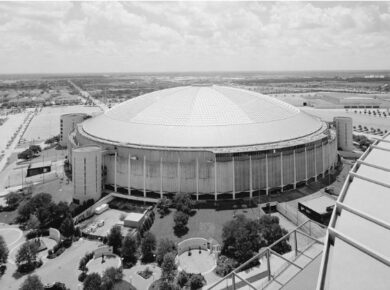Ludwig Mies van der Rohe (Aachen, 27/3/1886 – †Chicago, 17/8/ 1969)

(photographer: Arthur Siegel), courtesy Chicago History Museum #ICHi-15955.
I do not know whether idolatry is healthy, so let me put it like this: Mies is one of those unique personalities who have triggered my love for steel in architecture. So much has already been written and said about him, that there is nothing more I can add. On the Archipel website, I found a short but accurate description of his life and work. If you want to know more, I recommend the wonderful book MIES by Detlef Mertins, published by Phaidon.

Photography: Simon Menges
Mies was a German-American architect and furniture designer. After training as a furniture designer, he joined Peter Behrens, where he met Walter Gropius and Le Corbusier. His style developed from romantic classicism to a modernist style, influenced by De Stijl, among others. In 1930, Mies van der Rohe became the director of the Bauhaus in Dessau, until it was closed by the Nazis in October 1932. In 1938, he emigrated to the United States and became the director of the architecture department of the Illinois Institute of Technology in Chicago.

Photography: Maciej Jeżyk
His architectural style is characterised by clean lines and a consistent use of steel and glass with constructively clever and beautiful corner solutions. He was the spiritual father of the standard skyscraper”, which is in fact limited to a “block” consisting of a steel frame filled with glass. The absence of ornaments meant a clear break with tradition.

(Source: William Zbaren).
The influence of Mies van der Rohe is unmistakable: the skyline of world cities is unthinkable without the rectangular skyscraper. His architecture has clear, measured forms and is distinguished by the thoughtful and precise use of glass, steel and natural stone. He is credited with the statement: “Less is more”. (source: Archipel).

Photography is by William Zbaren.
Mies knew how to take maximum advantage of the materials and technologies of his time. The clear and smart way he uses steel and glass, in a rhythm that not only provides the structure to a building but contributes to its design and economy. Principles which are still today applied by many architects.

Photo: David Zidlický
About the Author:

Bruno Dursin – Managing Director at Believe in Steel. Bruno has more than 30 years of experience in promoting steel & steel solutions. His clients benefit from his extensive network within the building industry.



